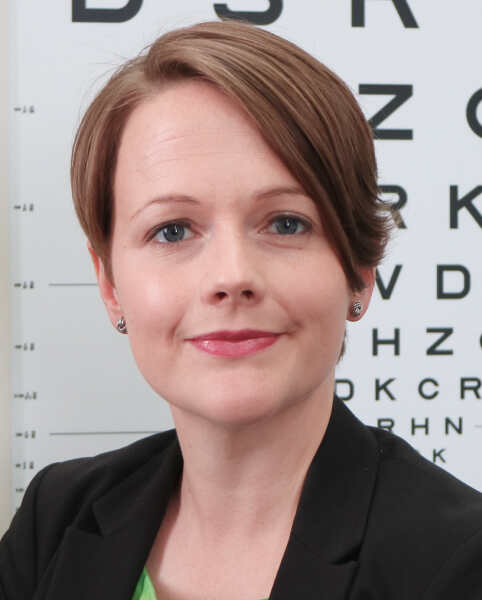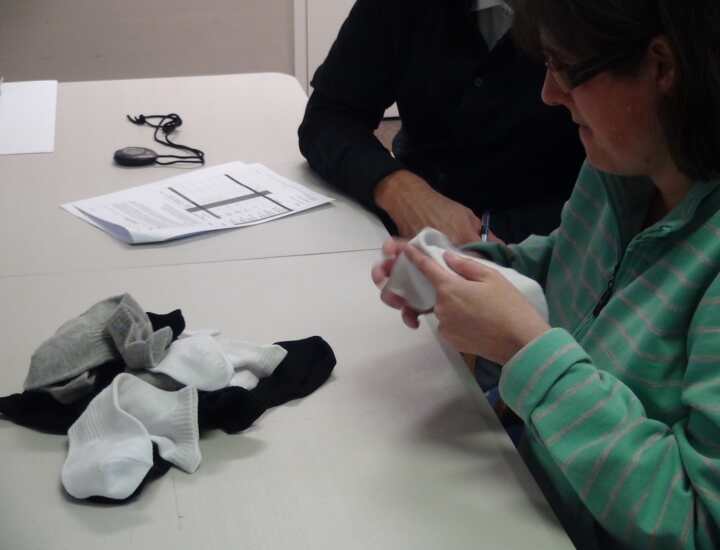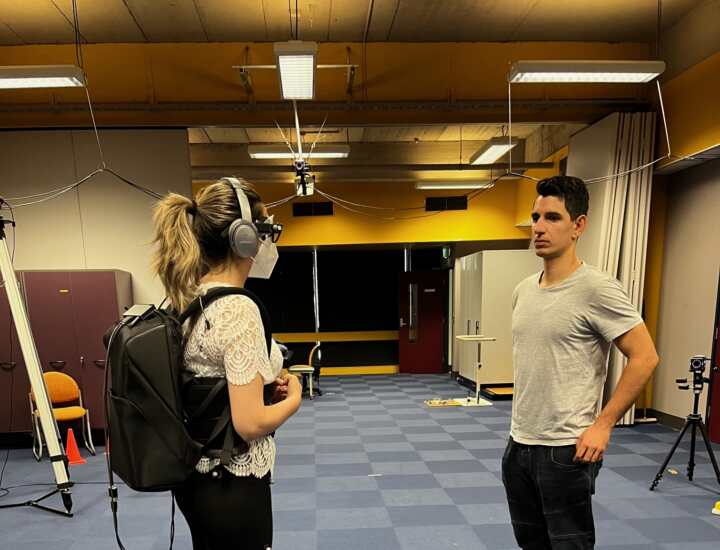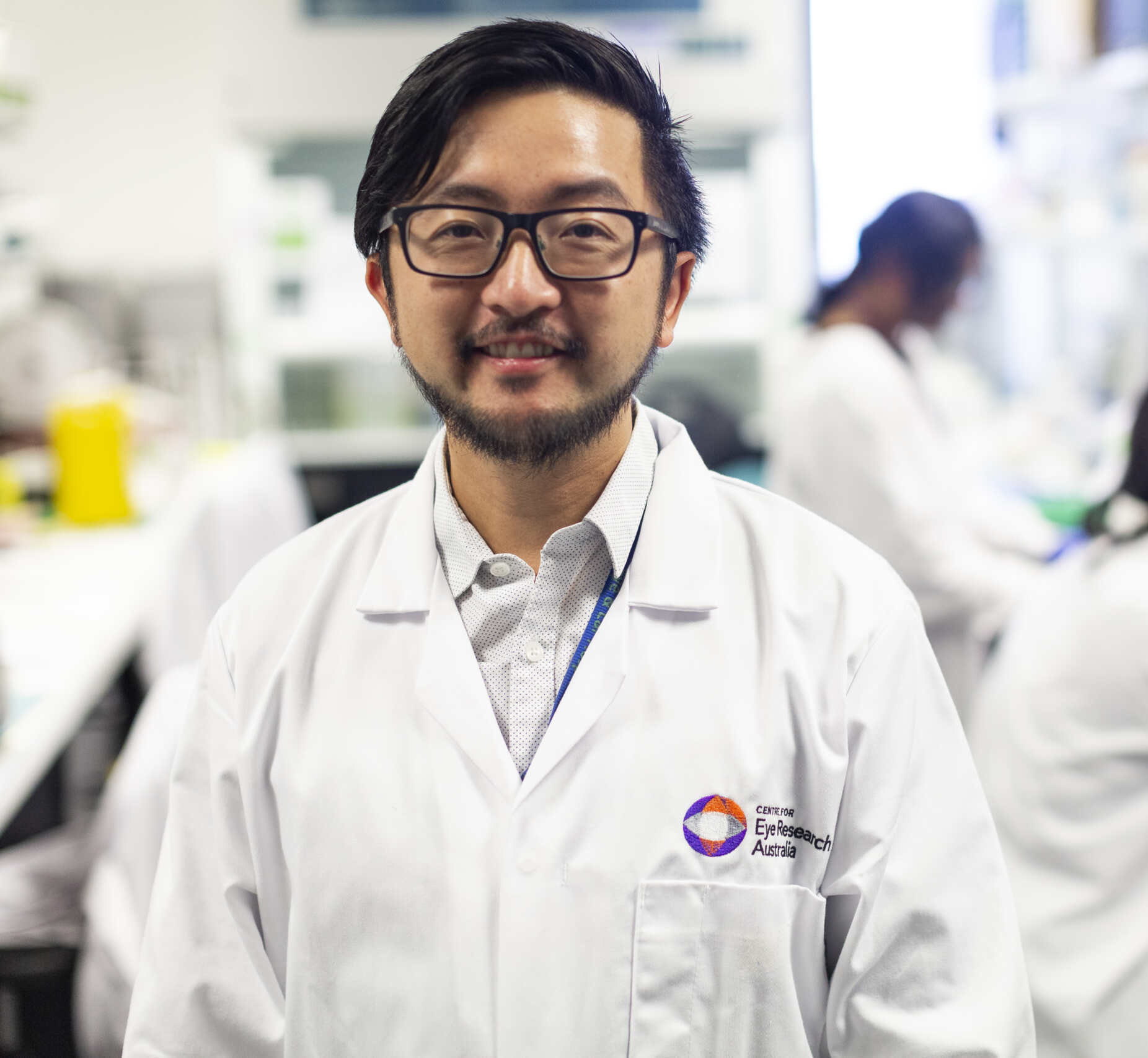30 October, 2023
Introducing Associate Professor Lauren Ayton from the University of Melbourne and Centre for Eye Research Australia, Melbourne, Australia
When did you get involved with Retina Australia?
I’ve been delighted to work closely with Retina Australia for almost 15 years now.
My initial interactions with the organisation were when I reached out for assistance in spreading the word about the Bionic Eye project in Australia. I was the Clinical Team Leader for the project from 2010 to 2017, and Retina Australia were a vital stakeholder in the development of the program, and ensuring potential recipients of the device were kept up to date on our advances.


I was then fortunate to get my first Retina Australia grant in 2014, with Professor Sharon Bentley. We developed a new low vision assessment tool, which has been used internationally in clinical trials and research.
Pictured on the left is Lauren wearing the bionic eye simulator device, when developing the Low Vision Assessment of Daily Living (LoVADA protocol), funded by Retina Australia 2014.
Pictured below is an image of a participant sorting black, white and grey socks, with occupational therapist Shane McSweeney, as part of the LoVADA protocol, 2014.
My work on the Bionic Eye, including the development of this new low vision tool, then led me to an opportunity to work in industry in the USA. Between 2017 and 2019, I was the Director of Clinical and Regulatory Affairs for Bionic Eye Technologies, a start up company from Harvard and Cornell Universities.
The bionic eye work in Australia continues today under the lead of Associate Professor Penny Allen, who has been the surgeon and Surgical Lead on the project since inception.
To date, 7 people in Victoria have had a bionic eye implant, and we thank them from the bottom of our hearts for contributing to the scientific development.
My next grants from Retina Australia came in 2021, when I was lucky enough to receive two!
One I led, which was a study looking at sensory substation devices, which use audio or tactile cues to help with navigation and mobility. This program is ongoing, and is part of a PhD study by Rui Jin.


We are very excited about this work, as we are collaborating with physiotherapists and biomotion experts, using high technology tools to measure the gracefulness of navigation with devices. Since the RA grant, we have been successful in attracting industry clinical trials to the University, and have been able to assess several new devices.
The other 2021 grant was led by Associated Professor Heather Mack, and we were able to complete the largest survey of the knowledge and perspectives of people with IRD on gene therapy. This survey, with nearly 700 respondents, was published in a highly prestigious journal called Nature Gene Therapy in early 2023. We have just finished the followup phase of this study, where we have interviewed almost 600 people overseas with the same questions. We will shortly publish the findings of this study, and we will be able to compare how people feel about gene therapy in Australia with overseas views.
Why are organisations like Retina Australia important for the work you do?
Retina Australia is incredibly important to our research team. In addition to being an amazing source of lived experience wisdom for us, the executive and members of Retina Australia have directly contributed research ideas and, of course, their time for both in-person clinical visits and surveys over the phone or on-line. I really enjoy my interactions with Retina Australia, including webinars and conferences, and thank all the members for their assistance in our work.
Why did you choose to undertake research in the Inherited Retinal Disease space?
Both of my brothers had vision problems when I was young. My older brother suffered a brain injury at birth and lost all sight, whilst my younger brother had a relatively-easy-to-treat condition, which just needed a simple surgery and glasses. I became very interested in vision, and passionate about finding treatments for vision loss. Hopefully, I’m on my path to doing just that!
What did receiving a grant from Retina Australia mean for you personally and has it had any “spinoffs” for others in the research field.
The Retina Australia grants have dual meaning for me.
Firstly, the funding is incredibly valuable for projects that may be too early for government support, to help us prove our exciting and novel ideas.
Secondly, the fact that the funds come from an organisation that really understands IRDs, with an outstanding scientific advisory committee, gives us confidence that the work we are doing is important to people with IRDs. We always welcome feedback from members of Retina Australia, and suggestions on what areas would be of benefit to them in the research space. We look forward to continuing to work with Retina Australia as we build our clinical registry (called VENTURE, through Centre for Eye Research Australia and then University of Melbourne) and conduct industry-sponsored clinical treatment trials.
Happy 40th Anniversary Retina Australia!
https://retinaaustralia.com.au/researcher-associate-professor-lauren-ayton/
Other News

2026 Research Grants awarded
The Board of Retina Australia is delighted to announce two new Research Grants awarded for 2026. Associate Professor Raymond Wong, from the Centre for Eye...

Australia Approves Second Treatment for Geographic Atrophy
Astellas' IZERVAY® (avacincaptad pegol) has been approved for use in Australia by the TGA Astellas...

New Director joins Retina Australia
Retina Australia directors are pleased to announce that following the Annual General Meeting held 11 October 2025, Norlizzah (Liz) Syed was appointed to the...
